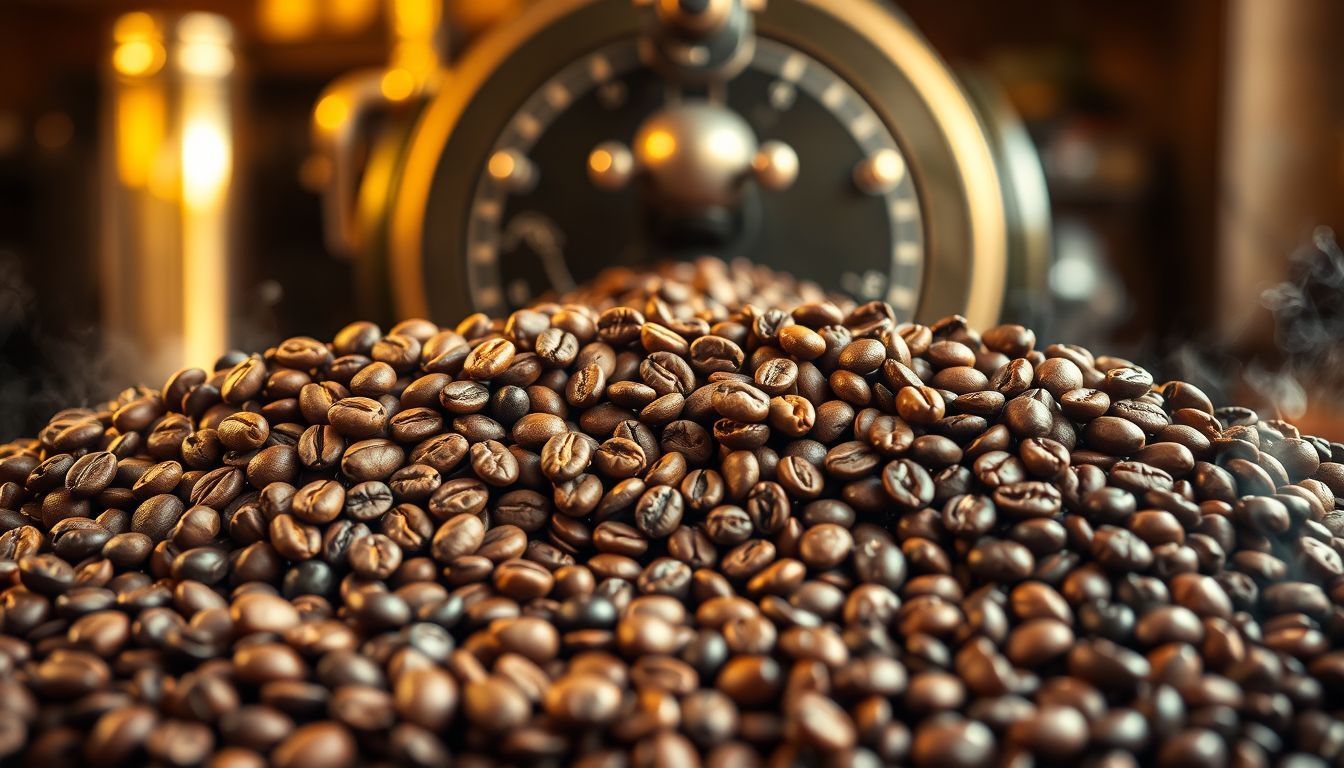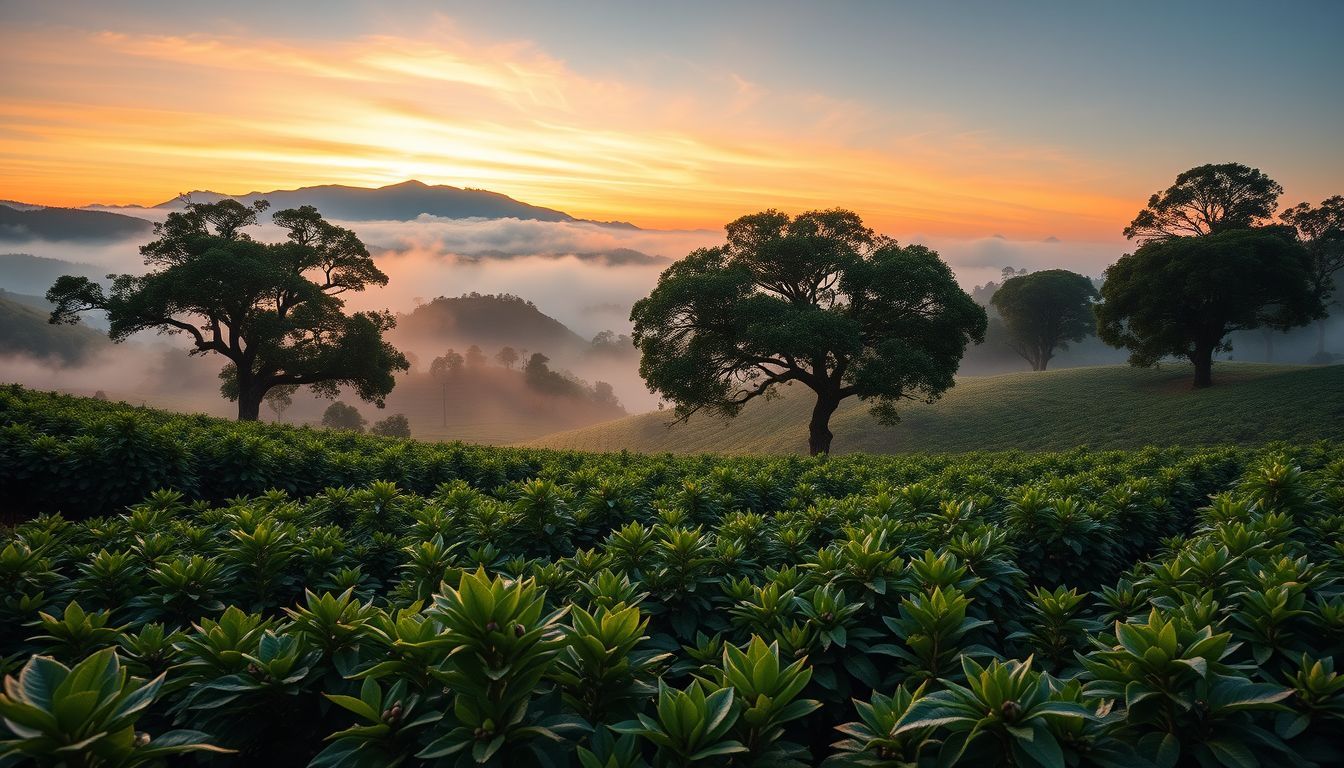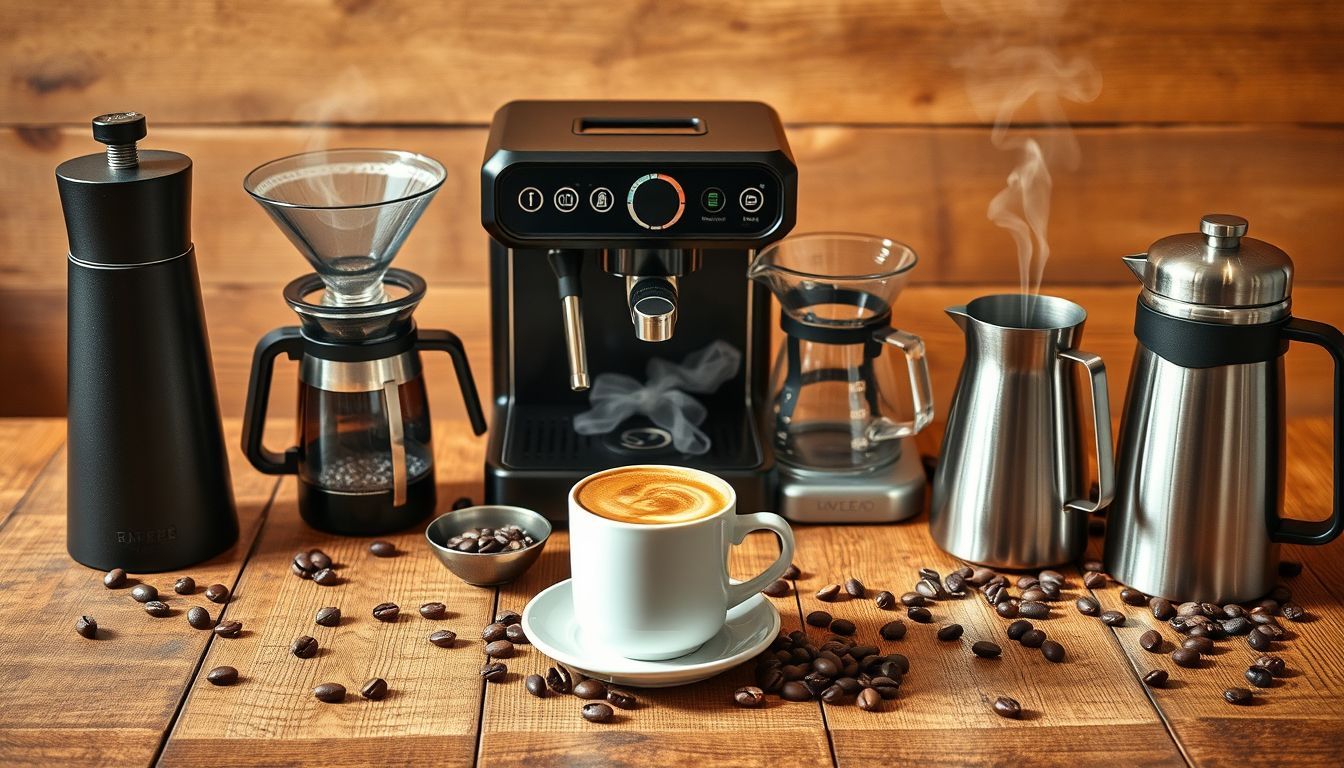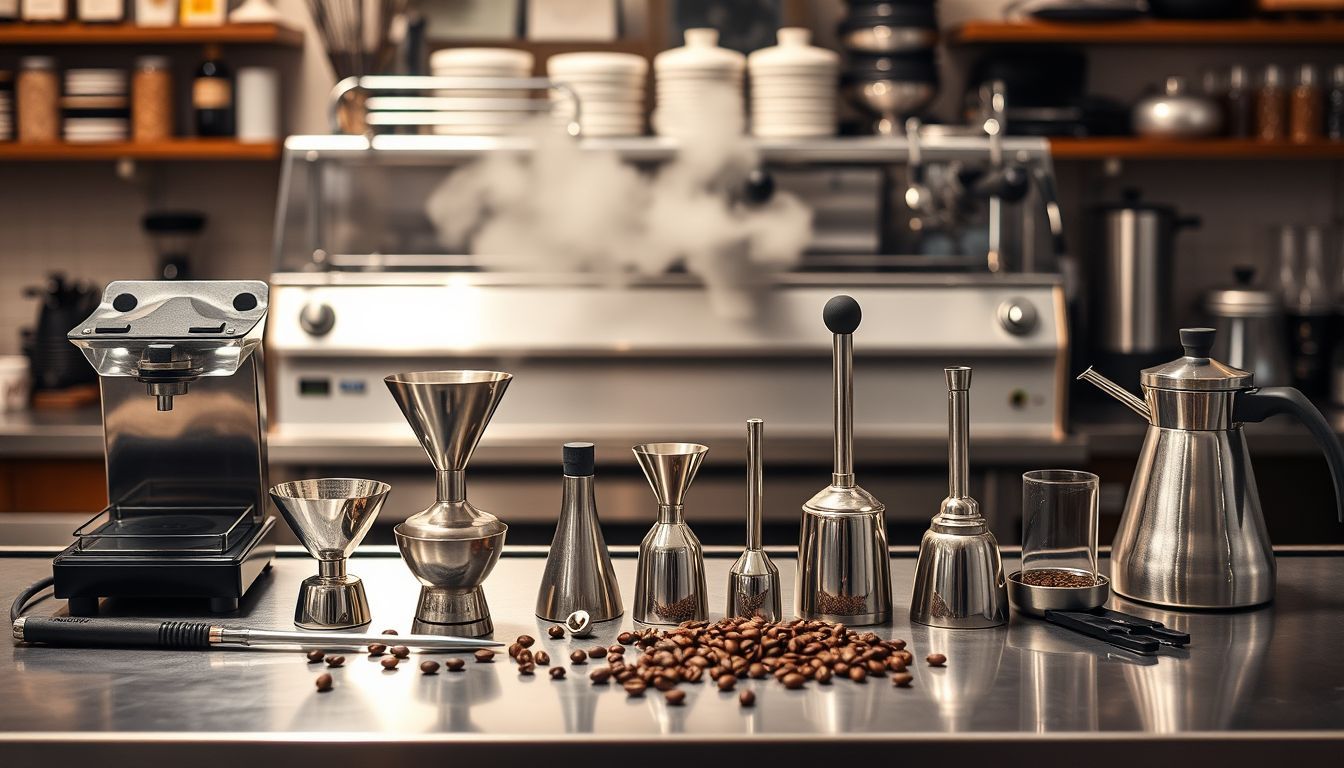Coffee Roast Levels Explained: From Light to Dark and Everything in Between
Journey through the transformative art of coffee roasting, from the delicate first crack to the bold depths of dark roasts, discovering how heat and time unlock the soul of each bean.

Amazon Affiliate Disclosure
This post contains affiliate links. If you purchase through these links, we may earn a small commission at no additional cost to you.
In the hushed cathedral of a roastery at dawn, something magical unfolds. Green coffee beans—dense, grassy, and holding their secrets close—tumble into the roasting drum. What happens next is nothing short of alchemy: heat becomes the artist, time becomes the canvas, and the roaster becomes the conductor of a symphony written in crackling sounds, aromatic releases, and color transformations that span from pale gold to deep mahogany.
I've stood beside countless roasters, watching their faces illuminated by the glow of the sight glass, listening as they interpret the language of the beans. Each roast level tells a different story, reveals different truths about the coffee's origin, and offers different gifts to those who drink it. Understanding these levels isn't just about preference—it's about unlocking the full potential of every bean that has traveled from distant mountains to your morning cup.
The Journey Begins: Understanding the Roasting Process
The Green Bean's Transformation
Before we explore the spectrum of roast levels, we must understand what happens inside that roasting drum. Green coffee beans are living libraries, containing hundreds of compounds that will transform under heat. Sugars caramelize, acids develop and diminish, oils migrate, and cellular structures break down and rebuild in entirely new configurations.
The roasting process is a carefully controlled application of heat over time, typically lasting between 8 and 20 minutes depending on the desired outcome. During this time, the beans undergo dramatic physical and chemical changes that determine everything from color and aroma to flavor and body.
The Language of Cracks
Roasters navigate by sound as much as sight. Two distinct auditory landmarks guide the journey: first crack and second crack. These aren't arbitrary markers—they represent fundamental structural changes within the bean.
First crack occurs when the beans have absorbed enough heat energy to cause their cellular structure to rupture audibly. It sounds like popcorn popping, a rapid-fire series of snaps that signals the beans have entered the realm of true coffee. This typically happens around 385–400°F (196–204°C).
Second crack is quieter, more subtle—a gentle crackling that occurs as the bean's structure continues to break down, oils begin to migrate to the surface, and the roast enters darker territory. This usually occurs around 435–445°F (224–229°C).
Between, before, and after these cracks lies the entire spectrum of roast levels, each offering its own interpretation of the bean's potential.
Light Roasts: Preserving the Origin's Voice
The Delicate Dance of Light Roasting
Light roasts are like watercolor paintings—delicate, nuanced, and requiring a gentle hand. These roasts typically end just at or slightly after first crack, preserving much of the bean's original character while developing enough to create recognizable coffee flavors.
When I cup a light roast, I'm transported back to the origin. The terroir speaks clearly—the floral notes of an Ethiopian Yirgacheffe, the wine-like acidity of a Kenyan AA, the green apple brightness of a Costa Rican honey process. Light roasts are windows into the soul of the coffee's birthplace.
Flavor Profile and Characteristics
Light roasts retain high acidity—that bright, lively quality that makes your mouth water and your palate sing. The body tends to be lighter, more tea-like, allowing subtle flavors to dance on your tongue without being overwhelmed by roast-derived characteristics.
These roasts often showcase:
- Pronounced acidity and brightness
- Floral and fruity notes
- Complex aromatics
- Light to medium body
- Minimal oil development
- Higher caffeine content
The bean’s surface remains dry, with little to no visible oil, and the color ranges from light brown to medium brown with no oil sheen.
Brewing Considerations for Light Roasts
Light roasts can be finicky—they require proper extraction to avoid sourness or under-development. Pour-over methods like the Hario V60 dripper excel with light roasts, as do other filter methods that allow for precise control over extraction time and water temperature.
These roasts often benefit from slightly hotter water (200–205°F) and longer extraction times to fully develop their potential. A gooseneck kettle with precise temperature control—such as the COSORI Gooseneck Kettle—ensures you hit those critical degrees every time.
Medium Roasts: The Harmonious Middle Ground
Finding Balance in the Middle
Medium roasts represent coffee's sweet spot for many drinkers—a harmonious balance between origin character and roast development. These roasts typically develop well past first crack but stop before second crack begins, creating a coffee that speaks both of its birthplace and its transformation.
In medium roasts, I find poetry in balance. The origin's voice remains clear but is now accompanied by the warm harmonies of caramelization. Sugars have had time to develop, acids have mellowed slightly, and body has increased without overwhelming the coffee's inherent character.
The Spectrum of Medium
Medium roasts actually encompass a range of development levels:
Medium-Light (American Roast): Just past first crack, these roasts maintain much of the origin character while adding subtle caramelization.
True Medium (City Roast): Well-developed past first crack, these roasts show balanced acidity and body with noticeable sweetness from caramelized sugars.
Medium-Dark (Full City): Approaching second crack, these roasts show decreased acidity, increased body, and more pronounced roast character while still maintaining origin notes.
Flavor Development in Medium Roasts
Medium roasts offer:
- Balanced acidity and body
- Caramelized sugar sweetness
- Chocolate and nut notes
- Reduced brightness compared to light roasts
- Increased richness and mouthfeel
- Versatility across brewing methods
The beans show a rich brown color, often with a slight oil sheen on medium-dark examples.
Brewing Versatility
Medium roasts are the chameleons of the coffee world—they adapt well to almost any brewing method. Whether you prefer espresso, drip coffee, or French press, a medium roast shines. For French press aficionados, I recommend the Mueller 12-Cup French Press to extract every bit of that caramel sweetness and balanced body.
Dark Roasts: Embracing the Roaster's Art
The Bold Territory of Dark Roasting
Dark roasts venture into territory where the roaster's art becomes as important as the farmer's craft. These roasts push well into or past second crack, creating coffees where roast character dominates while origin notes take a supporting role.
There's a misconception that dark roasting is somehow inferior or masks poor-quality beans. In reality, dark roasting is an art form that requires skill, timing, and an understanding of how different origins respond to extended heat application.
Dark Roast Characteristics
Dark roasts typically offer:
- Low acidity
- Full, heavy body
- Pronounced roast flavors (smoke, char, caramel)
- Minimal origin character
- Visible surface oils
- Lower caffeine content
- Bitter-sweet balance
By the time you reach these levels, it's common for oils to migrate to the bean’s surface, signaling a roast that has fully embraced the bold end of the spectrum.
Brewing Dark Roasts
Dark roasts excel in applications that emphasize body and richness. Espresso is perhaps the most famous application, and a classic stove-top kit like the Bialetti Moka Express delivers the syrupy shots that form the foundation of traditional Italian coffee culture.
French press, moka pot, and cold brew also work beautifully with dark roasts, as these methods emphasize body and richness while minimizing any harsh edges that might develop during extended roasting.
Tools of the Trade: Precision Matters
Whether you’re dialing in a light roast for nuanced fruity highlights or pushing a dark roast into territory of deep caramel and smoke, precision is key. A reliable scale is indispensable. I rely on the OXO Brew Precision Coffee Scale to measure my dose to the tenth of a gram and keep my pour-over consistency to the decimal point.
Matching Roast Levels to Origins
Origin-Roast Synergy
Not all coffees respond equally to different roast levels. Understanding how various origins perform at different roast degrees is crucial for maximizing each coffee's potential.
Ethiopian Coffees: Often shine at light to medium roasts where their floral and fruity characteristics can express fully.
Central American Coffees: Versatile across the roast spectrum, these coffees often show chocolate and nut notes in medium roasts while maintaining enough structure to handle darker roasting.
Brazilian Coffees: Excel at medium to dark roasts where their natural sweetness and full body can develop fully.
Indonesian Coffees: Often benefit from medium-dark to dark roasting, which complements their earthy, herbal characteristics and full body.
Processing Method Considerations
Processing methods also influence optimal roast levels:
Washed Coffees: Typically showcase their clean, bright characteristics best at light to medium roasts.
Natural Process Coffees: Can handle a wider range of roast levels, with their fruit-forward character evolving into wine-like complexity at medium roasts and rich sweetness at darker levels.
Honey Process Coffees: Often peak at medium roasts where their inherent sweetness balances beautifully with developed caramelization.
Personal Preference and Palate Development
Finding Your Roast Profile
Developing your roast preference is a journey of exploration. Start by tasting the same origin at different roast levels to understand how roasting affects flavor. Notice how a bright, floral Ethiopian coffee transforms as it moves from light to medium to dark roasting.
Seasonal Considerations
Many coffee lovers find their roast preferences shifting with the seasons. Light, bright roasts might appeal during warm summer months, while rich, full-bodied dark roasts provide comfort during winter’s chill.
Conclusion: Embracing the Full Spectrum
As I finish writing this, the aroma of a medium roast fills my kitchen—a Colombian coffee that speaks of mountain sunshine and careful processing, now transformed by heat into something entirely new yet still recognizably itself. This is the magic of roasting: the ability to unlock different aspects of the same bean, to tell different stories from the same origin.
Whether you’re starting with a Hario V60 dripper, refining your brewing with an OXO Brew Precision Coffee Scale, perfecting steam with a COSORI Gooseneck Kettle, embracing full-city velvet with a Mueller 12-Cup French Press, or chasing the darkest depths with a Bialetti Moka Express, the path you choose is uniquely yours. Taste widely, compare thoughtfully, and remember that every roast level represents someone’s careful attention to the ancient alchemy of transforming green seeds into liquid poetry. In the end, the best roast level is the one that brings you joy in that quiet moment when you lift the cup to your lips and taste not just coffee, but the culmination of countless decisions. Enjoy the journey.

Ben Carter
I spent the first part of my life learning the language of the wild—the rustle of leaves, the silence of snow, the resilience of a lone tree. In my writing, I try to translate that language, exploring how the landscapes around us shape the landscapes within us. My stories are quiet, but I hope they speak to a deeper part of you.


